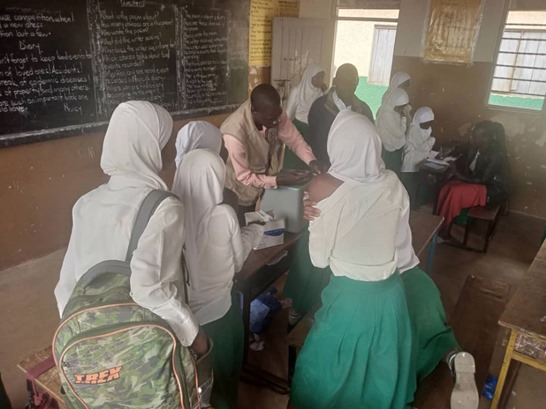Today, I participated in a monitoring and evaluation (M&E) activity to assess the ongoing school health outreach initiatives, a key effort aimed at improving the well-being of students across supported schools. These outreach programs play a vital role in delivering essential health services directly within school settings, ensuring that children and adolescents have access to care without barriers.
The school health program primarily focuses on providing immunization services, including the HPV vaccination, which protects young people against cervical cancer. Immunization is a critical component of preventive health, reducing the risk of vaccine-preventable diseases and contributing to a healthier school environment. In addition, the program offers deworming treatments, addressing intestinal parasites that can compromise nutrition, cognitive development, and overall school performance.
Another important aspect of the outreach is nutritional support, which ensures that students receive the nutrients necessary for growth, concentration, and overall physical development. Healthy, well-nourished students are better able to participate in learning activities and achieve their academic potential.
The outreach also emphasizes health education, empowering students with knowledge about hygiene, nutrition, sexual and reproductive health, and disease prevention. By combining education with services, the program fosters a comprehensive approach to adolescent and child health, equipping students with the tools they need to make informed decisions and adopt healthy behaviors.
During the M&E visit, I observed the program’s implementation closely, assessing service delivery, student engagement, and logistical efficiency. This evaluation is crucial for identifying strengths, pinpointing challenges, and recommending improvements to enhance the program’s impact. Monitoring also ensures accountability, transparency, and effective use of resources, which are essential for sustaining high-quality services over time.
These school outreach initiatives demonstrate the importance of bringing healthcare directly to students, particularly in areas where access to health facilities may be limited. By integrating immunization, deworming, nutrition, and health education, the program addresses multiple dimensions of child and adolescent well-being.
Through continuous M&E, stakeholders can adapt and refine interventions, ensuring that students receive the best possible care. Ultimately, these efforts contribute to healthier, more resilient learners who are equipped to thrive both academically and personally.








